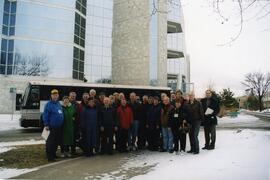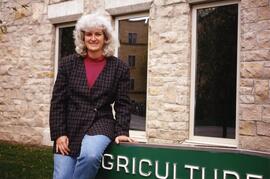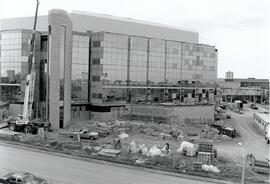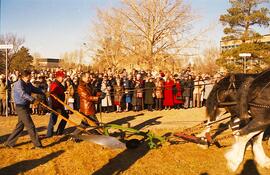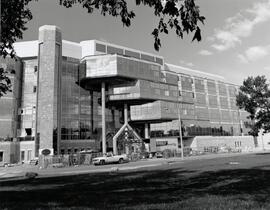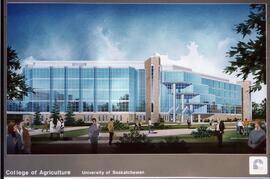Saskatchewan Agriculture Graduates Association - Campus Tour
- A-11044
- Item
- 13 Jan. 2001
More than 15 U of S College of Agriculture graduates from the class of 1961 held a reunion visit to campus, marking 40 years since their graduation. The group, which includes current University Board of Governors member Gary Carlson, far left, is getting ready to board a bus outside the Agriculture Building. to be given an expert tour of new buildings by U of S Associate Vice-President of Facilities Management Paul Becker, fifth from right, and University Architect Colin Tennent, far right. Becker and Tennent had just given the Agriculture grads a PowerPoint computer presentation about physical changes to the campus in the past 40 years. They had then taken a tour of the Agriculture Building. The Saskatchewan Agriculture Graduates' Association holds its reunion during Crop Production Week, and also has a hockey tournament, bonspiel, etc.
Bio/historical note: Image appeared in 19 Jan. 2001 issue of OCN.

